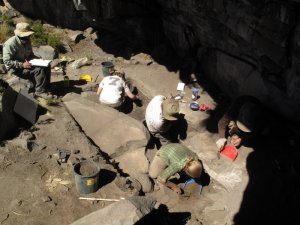
At two sites high in the southern Peruvian Andes, scientists have discovered remains that suggest human settlement about 12,000 years ago. At more than 4,000 meters above sea level (masl), they are now the highest sites for continuous human occupation ever recorded, predating the earliest known settlements by almost 900 years.
Led by Kurt Rademaker, a University of Maine visiting assistant professor in anthropology, the team investigated one site at 4,355 masl that yielded 260 stone tools such as projectile points, nondiagnostic bifaces and unifacial scrapers, which they dated to as much as 12,800 years old. The other site, the Cuncaicha rockshelter at 4,480 masl, contained lithic tools made from locally available obsidian, andesite and jasper, as well as plant remains, bones of vicuña and guanaco camelids and the taruca deer. The site also featured sooted ceilings and rock art, indicating that it was likely a base camp. It had a “robust, well-preserved and well-dated occupation sequence” up to 12,400 years old.
“We don’t know if people were living there year round, but we strongly suspect they were not just going there to hunt for a few days, then leaving,” says archaeologist Sonia Zarrillo of the University of Calgary, a key member of the research team. “There were possibly even families living at these sites, because we’ve found evidence of a whole range of activities.” This is a significant finding that lends important clues, because previous archaeological and anthropological studies have indicated that “hunters passing through an area will take the meat back to campsites and leave the carcass in the field,” adds Zarrillo. “In Cuncaicha we found remains representing whole animals, indicating they were living close to where the animals were killed. And the types of stone tools we’ve found are not only hunting tools but also scraping tools used for processing hides to make things like clothing, bags or blankets.”
__________________________________
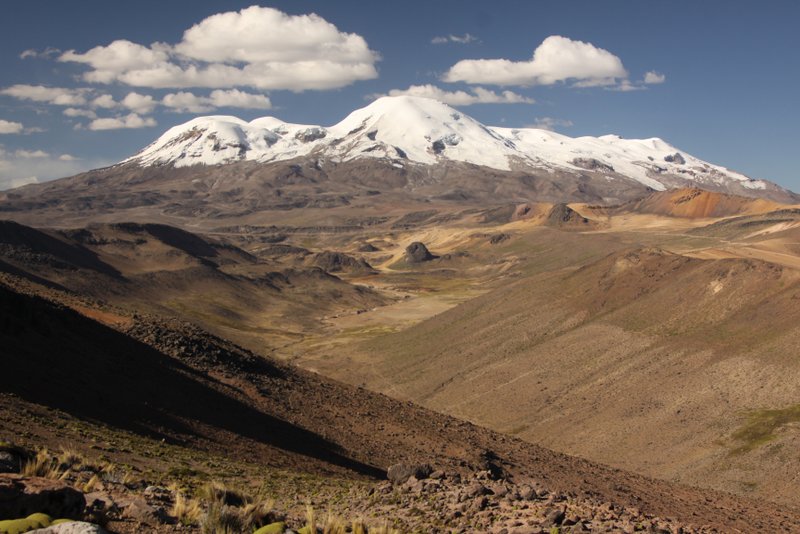 Nevado Coropuna, the highland area of the sites. Courtesy Kurt Rademaker
Nevado Coropuna, the highland area of the sites. Courtesy Kurt Rademaker
_______________________________
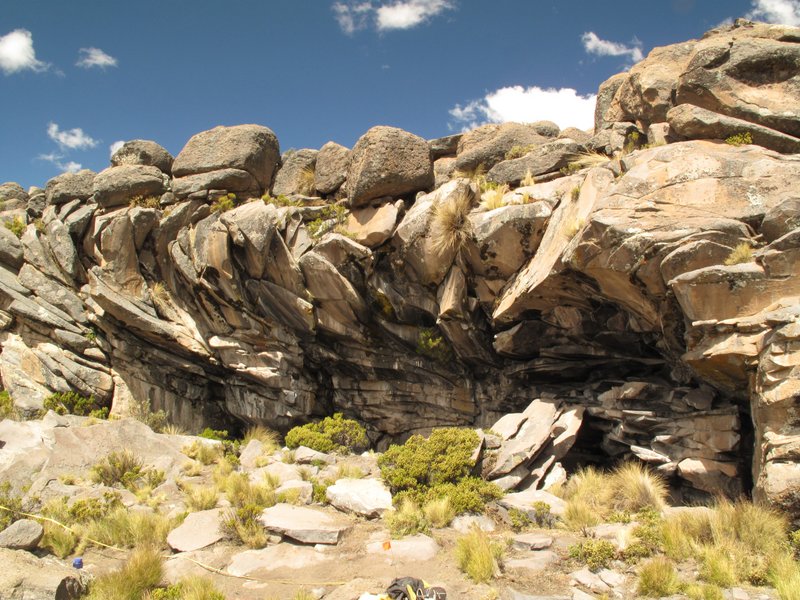 Cuncaicha Rock Shelter. Courtesy Kurt Rademaker
Cuncaicha Rock Shelter. Courtesy Kurt Rademaker
______________________________
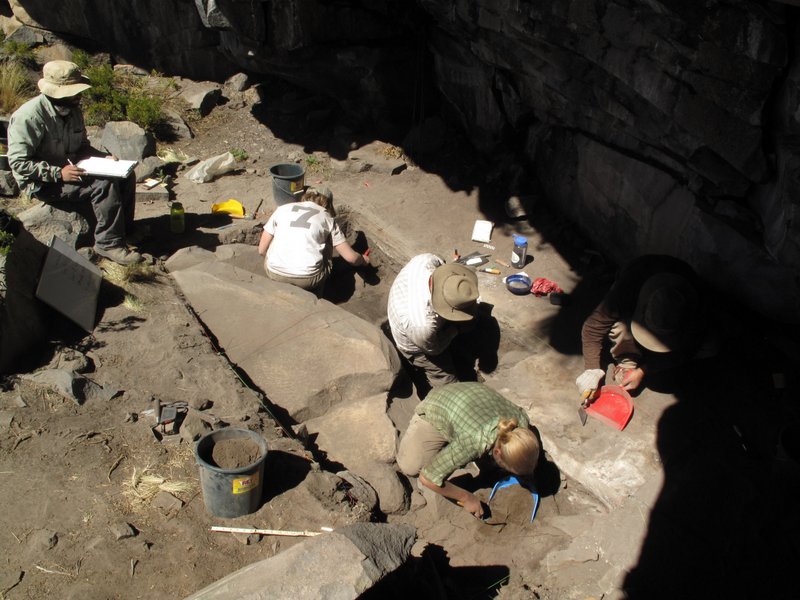 Excavations at Cuncaicha Rock Shelter. Courtesy Kurt Rademaker
Excavations at Cuncaicha Rock Shelter. Courtesy Kurt Rademaker
_____________________________
But the biggest takeaway from the sites has to do with their remote, high altitude locations, the physiology of humans, and the date ranges of the remains recovered. A widely held theory suggests that humans must adapt genetically to high altitudes before they can sustain their presence there as permanent living environments. Given the commonly accepted theory that people first entered the Americas around 14-15,000 years ago, the age of the site archaeological remains suggests a relatively rapid genetic adaptation. The Andeans of today have genetically adapted to their high altitude environment, Zarrillo notes. The key differences between the Andeans and most other Native Americans in this regard include a higher metabolic rate, larger lung capacity and higher hemoglobin concentrations than the former. These adaptations have allowed them to overcome a lack of oxygen.
“Was this adaptation present 12,400 years ago? We don’t know for certain,” says Zarrillo. “What we’re demonstrating is that these people either already developed that adaptation, or, it was possible for them to live in these altitudes for extended periods of time regardless.”
_____________________________
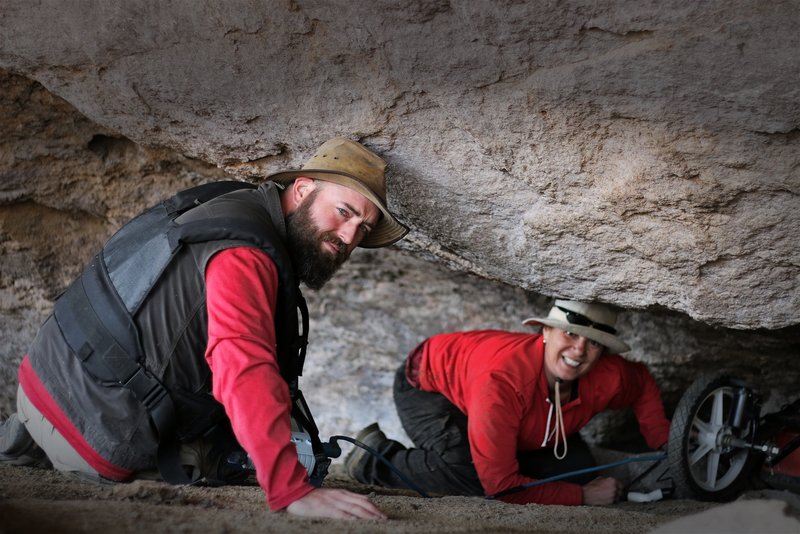 University of Calgary archaeologist Sonia Zarrillo uses ground penetrating radar at a Peruvian rock shelter. She is accompanied by Peter Leach, one of her co-authors for the paper published in the October 24th edition of the academic journal Science. Courtesy Walter Beckwith
University of Calgary archaeologist Sonia Zarrillo uses ground penetrating radar at a Peruvian rock shelter. She is accompanied by Peter Leach, one of her co-authors for the paper published in the October 24th edition of the academic journal Science. Courtesy Walter Beckwith
______________________________
Finding the anwers to these questions will be among the objectives of future research.
Write the researchers in the report, “the Pucuncho Basin sites suggest that Pleistocene humans lived successfully at extreme high altitude, initiating organismal selection, developmental functional adaptations and lasting biogeographic expansion in the Andes. As new studies identify potential genetic signatures of high-altitude adaptation in modern Andean populations, comparative genomic, physiologic and archaeological research will be needed to understand when and how these adaptations evolved.”*
The detailed study report is published in the journal Science.
_________________________________________
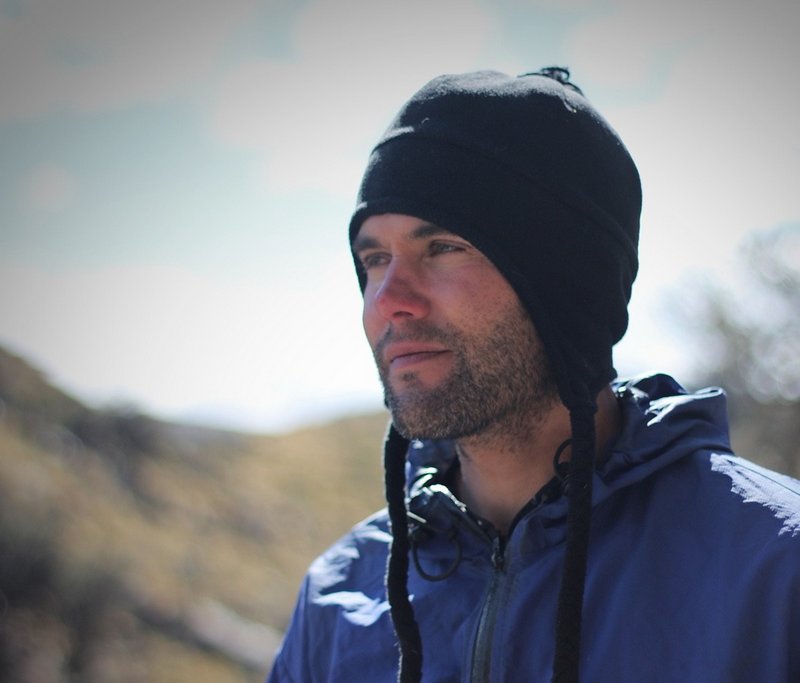 Kurt Rademaker (University of Maine, University of Tubingen), who led the expedition high in the Peruvian Andes. Courtesy Walter Beckwith
Kurt Rademaker (University of Maine, University of Tubingen), who led the expedition high in the Peruvian Andes. Courtesy Walter Beckwith
___________________________________________
*”Paleoindian settlement of the high-altitude Peruvian Andes,” by K. Rademaker; G.R.M. Bromley; D.H. Sandweiss at University of Maine in Orono, ME; G. Hodgins at University of Arizona in Tucson, AZ; K. Moore at University of Pennsylvania in Philadelphia, PA; S. Zarrillo at University of Calgary in Calgary, BC, Canada; C. Miller at University of Tübingen in Tübingen, Germany; P. Leach at University of Connecticut in Storrs, CT; D.A. Reid at University of Illinois-Chicago in Chicago, IL; W.Y. Álvarez. Published in the journal Science. http://www.sciencemag.org/lookup/doi/10.1126/science.1258260
Source: Adapted and edited from press releases of the University of Maine and the University of Calgary.
_________________________________________
Travel and learn with Far Horizons.
Read about the most fascinating discoveries with a premium subscription to Popular Archaeology Magazine. Find out what Popular Archaeology Magazine is all about. AND MORE:
On the go? Get the smartphone version of Popular Archaeology as an app or as an ebook.
Popular Archaeology’s annual Discovery Edition eBook is a selection of the best stories published in Popular Archaeology Magazine in past issues, with an emphasis on some of the most significant, groundbreaking, or fascinating discoveries in the fields of archaeology and paleoanthropology and related fields. At least some of the articles have been updated or revised specifically for the Discovery edition. We can confidently say that there is no other single issue of an archaeology-related magazine, paper print or online, that contains as much major feature article content as this one. The latest issue, volume 2, has just been released. Go to the Discovery edition page for more information.







